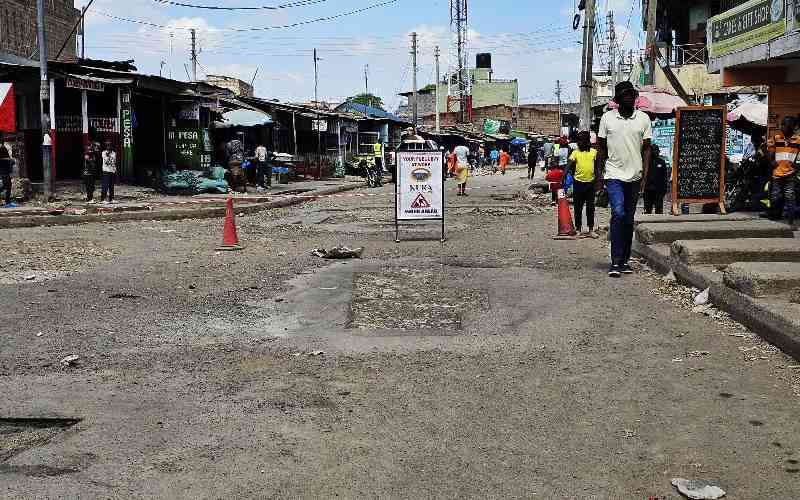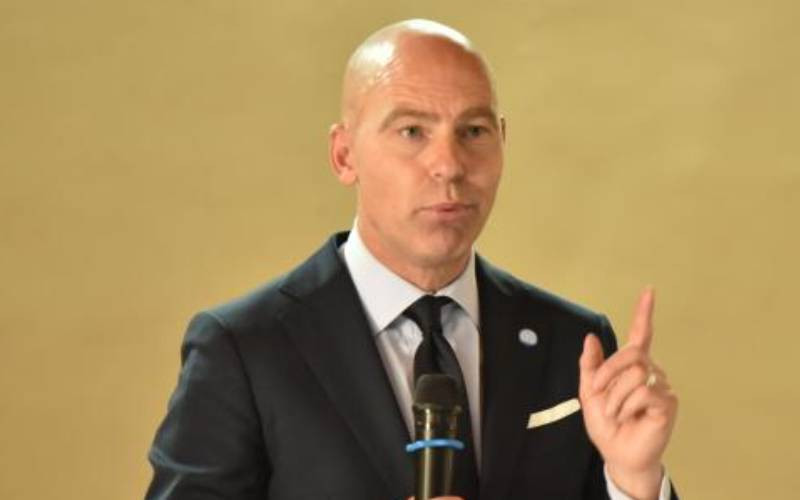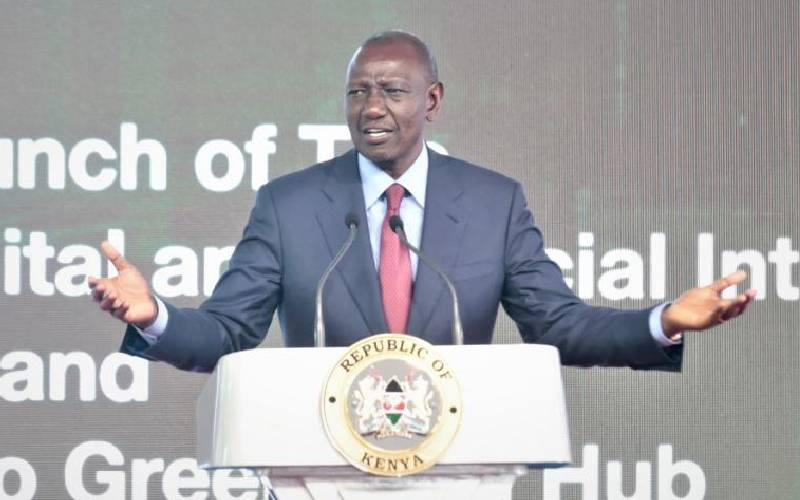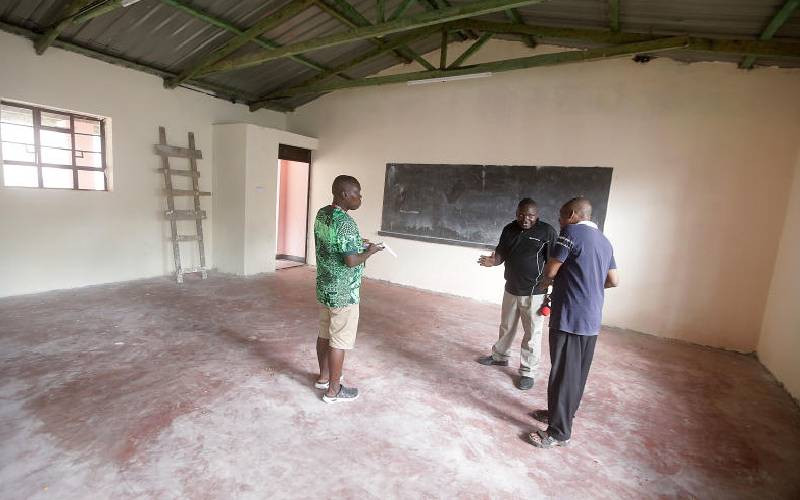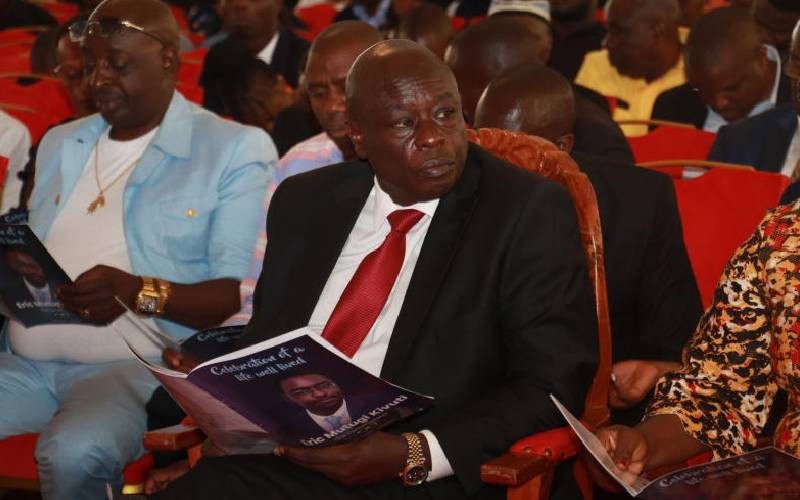By AUSTINE OKANDE
NAIROBI, KENYA: Standing at the junction of Nairobi’s Uhuru Highway and Kenyatta Avenue, the once dreaded Nyayo House is unmistakable.
At about 84 metres high and 27 floors, Nyayo House, which once dominated the city’s skyline, has been known over the years more for its infamous basement torture chambers, which used to play host to political dissidents, human rights activists and their lawyers.
Information from the Kenya National Archives indicates that the plan to put up the building was hatched in 1973 and its building commissioned by the Ministry of Public Work. However, its construction started in 1979 and was completed in 1983.
Originally to be named Nairobi House, it was renamed Nyayo House.
The structure, which has two wings — North Wing and South Wing — was designed by Ngotho Architects and was constructed by Laxmanbhai Construction at an estimated Sh219 million.
Currently hosting the Immigration offices and Nairobi Provincial Headquarters, Nyayo House today, is one of the busiest buildings in the city with well-lit reception area, orderly queues of people waiting to be served or go into a lift.
The staircases, once a no-go zone, are open to the public and the administrative police at the gate are friendlier, a stark contrast from what one would encounter at Nyayo House in the early 1980s as the building was heavily manned by mean-looking armed police officers.
Torture chambers
The horror of Nyayo House torture chambers would only be known to the public in early February 2003, when the doors to the chambers were opened to the public, steered by former Nairobi Provincial Commissioner Cyrus Maina.
This followed long sittings by the Truth, Justice and Reconciliation Commission (TJRC) where torture victims were accorded the opportunity to share their ordeal.
It was at the TJRC that some of the victims revealed that those considered rebels to the then government were roughed up and beaten by officers from the Special Branch, now the National Intelligence Service, in some of the building’s secluded floors.
Among the victims of the ‘Nyayo torture chambers’, according to the TJRC report, included CORD leader Raila Odinga, Koigi wa Wamwere, Imenti Central MP Gitobu Imanyara, Githunguri MP Njehu Gatabaki and journalist Bidan Mbugua.
Others included the late George Anyona, the late Wahome Mutahi and legendary benga artiste Ochieng’ Kabaselleh, who is alleged to have succumbed to his injuries soon after being released.
Reports claim that the Kanu regime converted the strong rooms at Nyayo House into torture chambers in the early 1980s, claims that were disputed by architect Gideon Mutemi Mulyungi from the Ministry of Works, who told the TJRC last year, that the rooms were initially designed to store cash and sensitive and valuable documents from government departments.
Stay informed. Subscribe to our newsletter
According to the plans showed to the TJRC, the strong rooms were in the basement with 12 cubicles measuring about two-and-a-half metres long and two metres wide.
Reports during the TJRC also revealed that the walls were built with “reinforced concrete” to resist fires, make them soundproof and deter intruders. The rooms had no naturally ventilation, therefore artificially aerated through special piping in the roof and walls.
Revealed also in the TJRC report is that a note was made on the building plan indicating that all doors from the lift, except those to the basement, the fifth, tenth, 15th and 23th floors, were to be sealed with concrete slabs.
restricted access
The contractor said they were instructed to ensure the lift served only those departments, which needed access to the strong room.
The departments, which were allowed access to the strong rooms, included the police special branch, senior officers in the provincial administration and Nairobi provincial commissioner.
Further claims were also made that the police special branch installed controls to flood the cells with freezing water or blast them with hot gritty air or clouds of dust to convert the rooms into torture chambers.
Today, the fifth floor of this once feared building, still hosts the office of the Nairobi PC and senior officers in the Provincial Administration.
Through the past, Nyayo House has undergone reconstruction.
For instance, the basement, otherwise referred to as the ‘Nyayo torture chambers’, has now been converted into a parking space for 62 cars.
 The Standard Group Plc is a
multi-media organization with investments in media platforms spanning newspaper
print operations, television, radio broadcasting, digital and online services. The
Standard Group is recognized as a leading multi-media house in Kenya with a key
influence in matters of national and international interest.
The Standard Group Plc is a
multi-media organization with investments in media platforms spanning newspaper
print operations, television, radio broadcasting, digital and online services. The
Standard Group is recognized as a leading multi-media house in Kenya with a key
influence in matters of national and international interest.
 The Standard Group Plc is a
multi-media organization with investments in media platforms spanning newspaper
print operations, television, radio broadcasting, digital and online services. The
Standard Group is recognized as a leading multi-media house in Kenya with a key
influence in matters of national and international interest.
The Standard Group Plc is a
multi-media organization with investments in media platforms spanning newspaper
print operations, television, radio broadcasting, digital and online services. The
Standard Group is recognized as a leading multi-media house in Kenya with a key
influence in matters of national and international interest.


